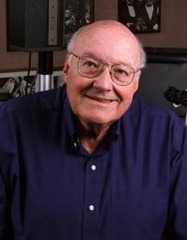
WOBURN, Massachusetts and TOKYO, June 11, 2012 /PRNewswire/ --
- Significant improvements in time to progression (TTP) and overall survival (OS) observed in patients on tivantinib vs. on placebo whose tumors were MET-high
- Hepatocellular carcinoma (HCC) is the most common primary liver cancer and on the rise worldwide[1]
- Phase 3 study among previously treated HCC patients with MET-high tumors is currently being planned with tivantinib
ArQule, Inc. (Nasdaq: ARQL) and Daiichi Sankyo Co., Ltd. (TSE: 4568) announced final results from a randomized, placebo-controlled, double-blind, phase 2 clinical trial with the selective MET inhibitor tivantinib
as a single-agent, investigational, second-line treatment in hepatocellular carcinoma (HCC). The data was presented at the 48th Annual Meeting of the American Society of Clinical Oncology (ASCO) (abstract number 4006).
The 107 patients in the trial had unresectable HCC and had disease progression after first-line therapy or were unable to tolerate the first-line therapy. Patients were randomized to receive tivantinib at 360 milligrams (mg) twice daily or 240 mg twice daily or placebo (2:1 tivantinib:placebo). The primary endpoint was time to progression (TTP) in the intent to treat (ITT) population. Other study endpoints were disease control rate (DCR), progression free survival (PFS), overall survival (OS), as well as safety for the ITT population and pre-defined MET-high or MET-low cohorts (as defined by immunohistochemistry).
A statistically significant 56 percent improvement as compared to placebo was seen in TTP in the ITT population (hazard ratio [HR] = 0.64; 90 percent confidence intervals [CI] = 0.43-0.94; log rank p-value = 0.04). The median TTP in tivantinib arm was 1.6 months and 1.4 months in the placebo arm.
In the MET-high cohort, there were statistically significant improvements in TTP, PFS and OS:
- Median OS in tivantinib arm was 7.2 months and 3.8 months in the placebo arm (HR = 0.38; 95 percent CI = 0.18-0.81; log rank p-value = 0.01)
- Median TTP was 2.9 months in the tivantinib arm and 1.5 months in the placebo arm (HR = 0.43; 95 percent CI = 0.19-0.97; log rank p-value = 0.03)
- Median PFS was 2.4 months in the tivantinib arm and 1.5 months in the placebo arm (HR = 0.45; 95 percent CI = 0.21-0.95; log rank p-value = 0.02).
There was no significant difference in TTP or OS between tivantinib and placebo in the MET-low cohorts.
Adverse events were reported at similar rates in the treatment and placebo arms of the trial, except for a higher incidence of fatigue and hematologic events, including neutropenia and anemia, in tivantinib-treated patients. The incidence of hematologic events decreased following dose reduction of tivantinib from 360 mg twice daily to 240 mg twice daily. Due to increased incidence of neutropenia in the 360 mg treatment group, the tivantinib dose was reduced to 240 mg twice daily for all patients.
"Patients living with this disease need more options to slow progression. The findings from this tivantinib study represent the first randomized data reported in HCC with an investigational MET inhibitor, as single-agent therapy in second-line treatment," said Lorenza Rimassa, Deputy Director, Medical Oncology Unit, Humanitas Cancer Center, Milan, Italy. "The data suggest that patients significantly benefited in time to progression and, importantly, those in a biologically relevant MET-high subgroup had an additional significant advantage in overall survival."
"Research has shown that MET is a signaling pathway associated with poor outcomes in many cancers, including liver cancer and non-small cell lung cancer (NSCLC)," said Glenn Gormley, MD, PhD, Global Head of Research & Development and Senior Executive Officer, Daiichi Sankyo Co., Ltd. "The strong overall survival results among HCC patients in this trial whose tumors were MET-high reinforce this previous research that defines MET as a critical pathway in cancer as well as the activity of tivantinib as a MET inhibitor."
About Hepatocellular Carcinoma (HCC)
Globally, liver cancer is the sixth most common cancer (749,000 new cases per year), accounting for 7 percent of all cancers, and is the third cause of cancer related death (692,000 cases per year).[2]. HCC represents more than 90 percent of primary liver cancers. [3] Chronic hepatitis B and C are recognized as the major factors worldwide increasing the risk of HCC, with risk being even greater in the presence of co-infection with these viruses.[4] Cirrhosis is also a risk factor for development of HCC.
About Tivantinib and the MET pathway
Tivantinib is an orally administered, selective inhibitor of MET, a receptor tyrosine kinase.
In healthy adult cells, MET is present in normal levels to support natural cellular function, but in cancer cells MET is inappropriately and continuously activated for unknown reasons. When abnormally activated, MET plays multiple roles in aspects of human cancer, including cancer cell growth, survival, angiogenesis, invasion and metastasis.
Tivantinib is currently in phase 3 development and has not yet been approved for any indication. Tivantinib has the potential to be a first-in-class MET inhibitor for the treatment of non-small cell lung cancer (NSCLC) and is currently being studied for other indications including liver and colorectal cancers.
About ArQule and Daiichi Sankyo Co., Ltd.
In December 2008, ArQule and Daiichi Sankyo signed a license, co-development and co-commercialization agreement for tivantinib (ARQ 197) in the U.S., Europe, South America and the rest of the world, excluding Japan, China (including Hong Kong), South Korea and Taiwan.
About ArQule
ArQule is a biotechnology company engaged in the research and development of next-generation, small-molecule cancer therapeutics. The Company's targeted, broad-spectrum products and research programs are focused on key biological processes that are central to human cancers. ArQule's lead product candidate, in phase 2 and phase 3 clinical development together with development and commercialization partner, Daiichi Sankyo, Co. Ltd., is tivantinib, an oral, selective inhibitor of the MET receptor tyrosine kinase. The Company's pipeline consists of ARQ 621, designed to inhibit the Eg5 kinesin motor protein, and ARQ 736, designed to inhibit the RAF kinases. ArQule's current discovery efforts, which are based on the ArQule Kinase Inhibitor Platform (AKIP™), are focused on the identification of novel kinase inhibitors that are potent, selective and do not compete with ATP (adenosine triphosphate) for binding to the kinase.
About Daiichi Sankyo
The Daiichi Sankyo Group is dedicated to the creation and supply of innovative pharmaceutical products to address the diversified, unmet medical needs of patients in both mature and emerging markets. While maintaining its portfolio of marketed pharmaceuticals for hypertension, hyperlipidemia, and bacterial infections, the Group is engaged in the development of treatments for thrombotic disorders and focused on the discovery of novel oncology and cardiovascular-metabolic therapies. Furthermore, the Daiichi Sankyo Group has created a "Hybrid Business Model," which will respond to market and customer diversity and optimize growth opportunities across the value chain. For more information, please visit http://www.daiichisankyo.com.
This press release contains statements regarding the clinical trials with tivantinib (ARQ 197) by ArQule and its business partner, Daiichi Sankyo. These statements are based on the current beliefs and expectations of both companies, and are subject to risks and uncertainties that could cause actual results to differ materially. Positive information about pre-clinical and early stage clinical trial results does not ensure that later stage or larger scale clinical trials will be successful. For example, tivantinib may not demonstrate a promising therapeutic effect; in addition, it may not demonstrate an appropriate safety profile in current or later stage or larger scale clinical trials as a result of known or as yet unanticipated side effects. The results achieved in later stage trials may not be sufficient to meet applicable regulatory standards or to justify further development. Problems or delays may arise during clinical trials or in the course of developing, testing or manufacturing these compounds that could lead ArQule or its partners to discontinue development. Even if later stage clinical trials are successful, unexpected concerns may arise from analysis of data or from additional data. Obstacles may arise or issues may be identified in connection with review of clinical data with regulatory authorities. Regulatory authorities may disagree with ArQule's view of the data or require additional data or information or additional studies. In addition, the planned timing of initiation and completion of clinical trials for tivantinib are subject to the ability of ArQule, Daiichi Sankyo, and Kyowa Hakko Kirin, a licensee of tivantinib, to enroll patients, enter into agreements with clinical trial sites and investigators, and overcome technical hurdles and other issues related to the conduct of the trials for which each of them is responsible. There is a risk that these issues may not be successfully resolved. Drug development involves a high degree of risk. Only a small number of research and development programs result in the commercialization of a product. Positive pre-clinical data may not be supported in later stages of development. Furthermore, ArQule may not have the financial or human resources to successfully pursue drug discovery in the future. Moreover, with respect to partnered programs, even if certain compounds show initial promise, Daiichi Sankyo or Kyowa Hakko Kirin may decide not to license or continue to develop them, as the case may be. In addition, Daiichi Sankyo and Kyowa Hakko Kirin have certain rights to unilaterally terminate their agreements with ArQule. If either company were to do so, ArQule might not be able to complete development and commercialization of the applicable licensed products on its own. For more detailed information on the risks and uncertainties associated with ArQule's drug development and other activities, see ArQule's periodic reports filed with the Securities and Exchange Commission. Neither ArQule nor Daiichi Sankyo undertake any obligation to publicly update any forward-looking statements.
1. Hepatocellular carcinoma: Epidemiology, risk factors and pathogenesis. World Journal of Gastroenterology 14(27): 4300-08, 2008.
2. EASL-EORTC Clinical Practice Guidelines: Management of hepatocellular carcinoma. Journal of Hepatology. 2012;56: 908-943
3. EASL-EORTC Clinical Practice Guidelines: Management of hepatocellular carcinoma. Journal of Hepatology. 2012;56: 908-943
4. Chiaramonte M, Stroffolini T, Vian A, et al.: Rate of incidence of hepatocellular carcinoma in patients with compensated viral cirrhosis. Cancer 85 (10): 2132-37, 1999.
Source





